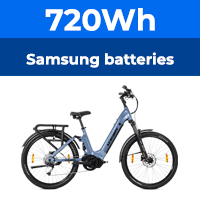I see exactly what you're saying here and know full well that the panasonic motor can deliver peak power of around ~450W, but the motor within the panasonic unit could always be isolated and powered in isolation from the torque sensor (as A2B did recently to revive a dead LaFree). At least.. that's what I would do if I were trying to prove that it was outside the letter of the law (which hopefully nobody will do as I rather like my bike).
Yes, it's exactly as The Killjoy as said, there'd be some Rumpole moments in court, to the great embarrassment of anyone who tried what you've said.

It can easily be shown that the Panasonic power unit is intended to power a bike, and that it is to be used as supplied. In law that is the motor, the whole unit, since courts are non-technical and will happily accept that concept. Any attempt to operate the integral motor only separately in another way would be a technique resulting in measurements unacceptable to a defence and the court, regardless of how accurate they were.
The alternative of applying a torque force to measure the motor output is what would bring the Rumpole moments:
Barrister: I see, you put in over 300 Watts to get 400 Watts out!
Witness: Yes.
Barrister: Seems a bit pointless, surely then the motor was only producing the 100 Watts difference?
Witness attempts to explain the technicalities and is then reminded he's there to answer questions, not make speeches.
I've had this power output argument before in the forum, and the essence is that it's only the legal issues that count and the interpretation of the law. Arcane engineering arguments count for nothing in our non-technical courts and no court will make rulings which are technical in nature.
As I said to David, I don't think concern about power outputs is necessary anyway. We are heading into a pedelec and torque sensing future, these being self limiting by their nature. The Lance Armstrongs of this world can exert enough input to achieve maximum output continuously, but they would never buy e-bikes anyway. E-bike customers are people who look for assistance, so are not capable of inputting those high powers on a continuous basis.
An accepted figure for continuous output over 1 hour is 200 Watts for a fully fit male in his prime. At best a fit e-bike customer would probably produce less than that, maybe 150 Watts continuously, resulting in less than 200 continuous Watts from the Panasonic motor over time when in high power mode.
The other power self limiting factor is range. It's all very well dumping a Crystalyte 406 in a bike and a large battery on the back to hurtle up hills, but not much use when it's all over 8 miles or so later. Range is likely to be a major factor for years to come, making high powers take second place.
.







